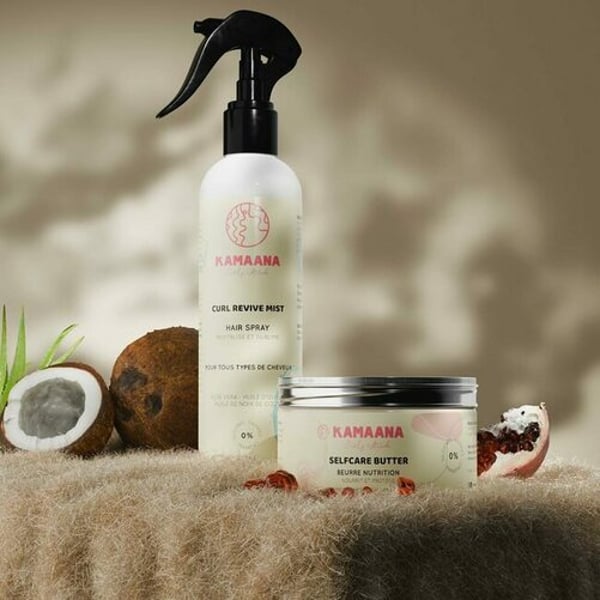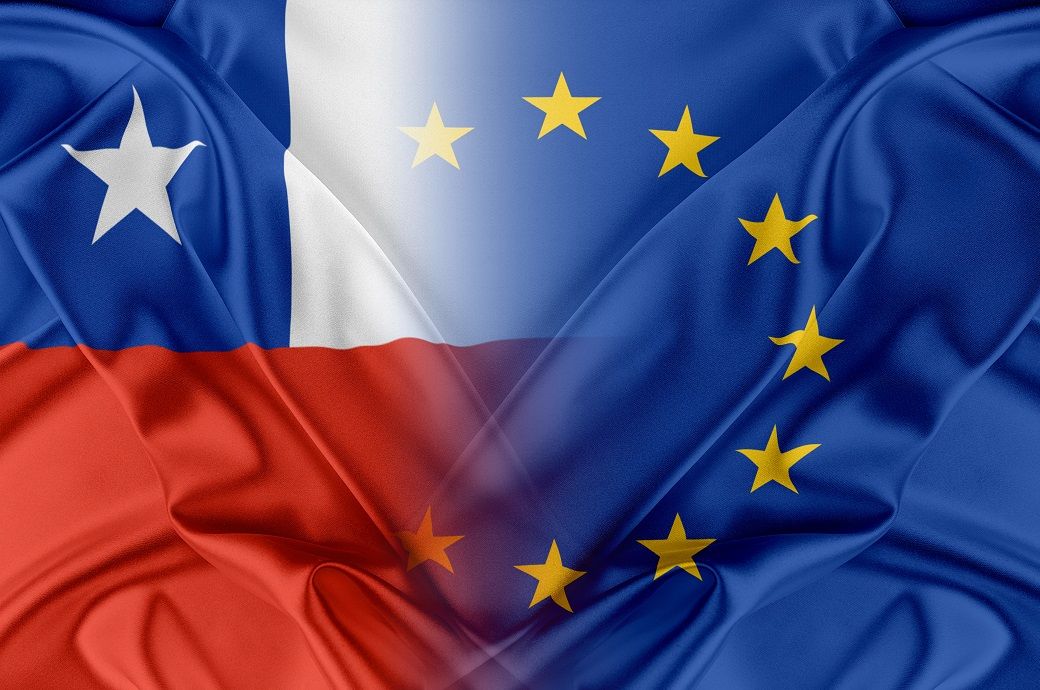Fashion
‘Curly is beautiful’: Tunisian women embrace natural hair

By
AFP
Published
August 21, 2025
In countries around the world, beauty standards have shifted radically in recent years, with a growing number of beauty salons and cosmetic brands in Tunisia promoting natural styles.
Still, the battle is far from won, and many women in Tunisia still rush to get their hair straightened ahead of a wedding or a meeting, and some fear that if they do not wear their hair straight for a job interview, they might not get hired.
Advocates for wearing one’s natural hair believe that at the root of the stigma around curls lies a form of discrimination that they call “texturism”.
“The further you move away from what is considered Afro, kinky or curly, the more socially accepted you are,” said Nawal Benali, a journalist and host of a podcast on racism in North Africa. “Because that’s a marker of proper appearance and presentability.”
Benali said the standards had first been set in “the white, Western world”, calling the obsession around straight hair an attempt to “erase our Indigenous and African features”.
Dhouha Mechergui, who co-founded Pineapple Studio, recalled having her hair straightened by her mother ahead of every religious holiday growing up. She said it took courage to make her own switch to natural, and that she had to work hard to convince women to embrace their curls and come to her salon. “Sometimes I play the role of psychiatrist, because I know making that decision is very difficult,” she said.
Aside from the drive for greater authenticity, health concerns have become a part of the debate, with one major study by the US National Institutes of Health linking chemical hair straightening products to a higher risk of uterine cancer.
For generations, people around the world were told to straighten, braid, cut or otherwise conceal their curls, or else get sent home from school or work. A global drive buoyed by the Black Lives Matter movement gave rise to a major pandemic-era trend of beauty videos celebrating natural hair.
The push did not go unnoticed: French lawmakers last year voted to ban discrimination based on hair texture, while several US states have passed similar legislation. Tunisia has no such initiative, so women entrepreneurs are leading the change.
In 2021, Sirine Cherif cofounded Kamaana — or “as I am” — Tunisia’s first homegrown haircare brand dedicated to curly locks. “When we started, we were the only specialised brand on the market,” she said. “A few months later, there was a domino effect: bigger brands launched their own curly-hair lines.”
And today, Tunisian companies such as Zynia and Lilas Cosmetics have joined the growing industry. For Cherif, the boom is both a lucrative business opportunity and a marker of profound social change.
“We are proud to have encouraged people to be themselves, to resist this societal pressure and embrace their natural hair,” she said. Her company has seen 42% annual growth since its founding, she said, adding: “We want to start a curl revolution.”
Copyright © 2025 AFP. All rights reserved. All information displayed in this section (dispatches, photographs, logos) are protected by intellectual property rights owned by Agence France-Presse. As a consequence you may not copy, reproduce, modify, transmit, publish, display or in any way commercially exploit any of the contents of this section without the prior written consent of Agence France-Presses.
Fashion
ITA to continue till Advanced Framework Agreement ratified: EU, Chile

A review of the trade and sustainable development provisions of the ITA is under way.
EU high representative for foreign affairs and security policy Kaja Kallas recently met Chilean Minister of Foreign Affairs Alberto van Klaveren. Both co-chaired the first EU-Chile Joint Council under the Advanced Framework Agreement in Brussels.
The EU and Chile are committed to deepening their trade and investment relations under the Interim Trade Agreement, which came into force on February 1 and will remain in force until the new Advanced Framework Agreement has been fully ratified.
Both sides will continue to cooperate on ensuring reliable and sustainable supply chains, including through diversification and support to strategic investments.
The first EU-Chile Trade Council meeting was held under the new ITA, according to an EU release.
The EU is Chile’s third-largest trade partner and the top source of foreign direct investment (FDI).
Both sides will continue to cooperate on ensuring reliable and sustainable supply chains, including through diversification and support to strategic investments, a joint statement issued said.
Chile welcomed the interest of the EU in establishing a dialogue with the member countries of the Comprehensive and Progressive Agreement for Trans-Pacific Partnership (CPTPP). Both parties affirm their ambition to translate this dialogue into a shared agenda.
Both sides remain committed to ensuring the effective implementation of the Advanced Framework Agreement, and to achieving its full ratification.
The provisional application of the EU-Chile Advanced Framework Agreement began on June 1, 2025.
Fibre2Fashion News Desk (DS)
Fashion
Chanel debuts A$AP Rocky as ambassador, with Margaret Qualley teaser video

Published
November 30, 2025
Chanel has appointed A$AP Rocky as a new brand ambassador and debuted his tenure with a teaser video shot in New York co-starring Margaret Qualley.
The video appeared Sunday just 48 hours before Chanel’s couturier Michel Blazy will stage his debut collection of Métiers d’Art also in New York. It’s a unique line first created by Karl Lagerfeld that highlights the unique stable of artisans Chanel has assembled in such skills as embroidery, pleating, glove-making and costume jewelry.
Directed by Michel Gondry, the 2.49-minute short opens with the stars waking up in the bed of a walkup apartment in Williamsburg. Where, after a quick peck on her lover’s forehead, Qualley disappears into a tiny bathroom, before magically changing out of her blue nightie and reappearing in a red, white and blue houndstooth Chanel jacket, paired with pale blue pants, her hair in a chignon.
https://www.youtube.com/watch?v=live
No sooner than she has disappeared, than A$AP leaps out of bed and descends the tenement building’s outside steel stairs and sets off on a mad dash after Qualley. This leads to him swimming under the Brooklyn Bridge, and running north through the Lower East Side, before finally catching up with Qualley at Astor Place station. All the action backed up my moody ambient music courtesy of Le Motel.
In between, the rapper and husband of Rihanna, manages to find time to stop in two discount stores to acquire pants and a blazer. Arriving just in time, to genuflect onto one knee, and hold out a small white Chanel box, containing one assumes a diamond engagement ring, at the station entrance. The sight of which leads the actress to leap into the air in paroxysm of joy, before the happy couple march arm and arm back into the subway.
And off one assumes to attend the Métiers d’Art show, which will be revealed on Tuesday, 8 p.m. NYC time.
Copyright © 2025 FashionNetwork.com All rights reserved.
Fashion
Canada’s Lululemon revamps commercial strategy with new global leader

Ms. Burgoyne joined lululemon in 2006 and became the company’s first President in 2020. Throughout her tenure, she has assumed roles of increasing responsibility and led the North America business through periods of rapid growth and expansion.
Lululemon Athletica has announced that Celeste Burgoyne, president of the Americas and global guest innovation, will leave at the end of December 2025 after 19 years with the brand.
The company will consolidate regional leadership and has appointed André Maestrini as president and chief commercial officer, giving him global oversight of stores, regions, digital channels and commercial strategy.
“We are grateful for Celeste’s leadership and significant contributions to lululemon’s business and culture over the past 19 years. She has been instrumental in growing our footprint in the Americas, creating high-quality guest experiences, and mentoring our teams across the organization,” said Calvin McDonald, Chief Executive Officer, lululemon. “I deeply appreciate her partnership and friendship, and we wish her all the best in the future.”
“My time at lululemon has been both inspiring and rewarding beyond belief,” said Ms. Burgoyne. “I am so proud of what we have accomplished as an organization since I joined in 2006 and know the team will take the company to even greater heights in the years to come. I look forward to continuing to support the brand as a lifelong fan.”
In conjunction with this announcement, lululemon has made the decision to consolidate regional leadership across the company and appoint André Maestrini as President and Chief Commercial Officer, effective immediately. Mr. Maestrini will continue to report directly to Mr. McDonald.
In this newly created role, Mr. Maestrini will provide integrated oversight of all of lululemon’s regions, stores, and digital channels globally. He will also oversee lululemon’s global commercial strategy with a focus on continued market expansion, revenue generation, and accelerating best practice sharing, across all regions including North America.
Mr. Maestrini joined lululemon in 2021 as Executive Vice President of International. In his current role, he has overseen lululemon’s operations in EMEA, APAC, and China Mainland, and has helped to more than quadruple lululemon’s international revenues.
“André has demonstrated a proven ability to unlock opportunities, advance our global expansion, and deliver growth across multiple markets,” said Mr. McDonald. “Leveraging operational discipline, deep guest insights, and extensive brand-building experience, André is the ideal person to lead our business across all markets, including North America, as we remain focused on delivering value for our guests, employees, and shareholders.”
Before joining lululemon, Mr. Maestrini spent 14 years at adidas in various senior roles across the globe. During this time, he served in a number of General Manager positions where he helped grow the company’s global sports categories and regional markets. Prior to adidas, Mr. Maestrini held marketing roles at The Coca-Cola Company, Danone, and Kraft Jacobs Suchard.
Note: The headline, insights, and image of this press release may have been refined by the Fibre2Fashion staff; the rest of the content remains unchanged.
Fibre2Fashion News Desk (RM)
-

 Sports1 week ago
Sports1 week agoWATCH: Ronaldo scores spectacular bicycle kick
-

 Entertainment1 week ago
Entertainment1 week agoWelcome to Derry’ episode 5 delivers shocking twist
-

 Politics1 week ago
Politics1 week agoWashington and Kyiv Stress Any Peace Deal Must Fully Respect Ukraine’s Sovereignty
-

 Business1 week ago
Business1 week agoKey economic data and trends that will shape Rachel Reeves’ Budget
-

 Tech6 days ago
Tech6 days agoWake Up—the Best Black Friday Mattress Sales Are Here
-

 Fashion7 days ago
Fashion7 days agoCanada’s Lululemon unveils team Canada kit for Milano Cortina 2026
-

 Tech6 days ago
Tech6 days agoThe Alienware Aurora Gaming Desktop Punches Above Its Weight
-

 Politics1 week ago
Politics1 week ago53,000 Sikhs vote in Ottawa Khalistan Referendum amid Carney-Modi trade talks scrutiny


















